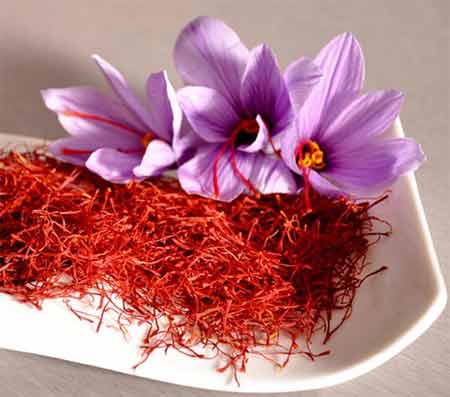
Saffron is a spice derived from the flower of Crocus sativus, commonly known as the "saffron crocus". Saffron crocus grows to 20–30 cm (8–12 in) and bears up to four flowers, each with three vivid crimson stigmas, which are the distal end of a carpel. The styles and stigmas, called threads, are collected and dried to be used mainly as a seasoning and colouring agent in food. Saffron, long among the world is most costly spices by weight, is native to Greece or Southwest Asia and was first cultivated in Greece As a genetically monomorphic clone, it was slowly propagated throughout much of Eurasia and was later brought to parts of North Africa, North America, and Oceania.
Saffron taste and iodoform or hay-like fragrance result from the chemicals picrocrocin and safranal. It also contains a carotenoid pigment, crocin, which imparts a rich golden-yellow hue to dishes and textiles. Its recorded history is attested in a 7th-century BC Assyrian botanical treatise compiled under Ashurbanipal, and it has been traded and used for over four millennia. Iran now accounts for approximately 90% of the world production of saffron.